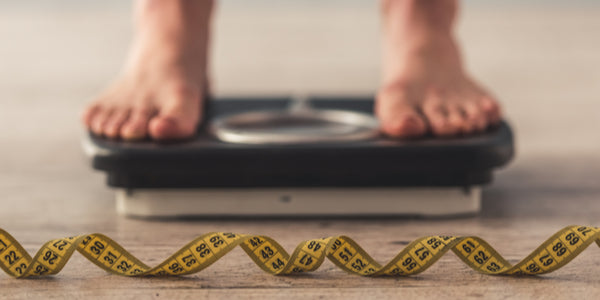
There’s no doubt about it, a type 2 diabetes diagnosis can tremendously impact your life. And, unfortunately, the diabetes statistics are alarming.
Diabetes affects nearly 34 million Americans of all ages as of 2019, with an estimated 90 to 95% of those cases being type 2 diabetes. Globally, the World Health Organization reports that, as of 2014, 422 million people have diabetes (and that number seems to be rapidly rising). It’s the eighth leading cause of death as of 2021 and a leading cause of blindness, heart attacks and stroke, kidney conditions, and amputation in the lower limbs.
These numbers aren’t meant to scare you but rather to emphasize the importance of catching early warning signs. Knowing what goes into a diabetes diagnosis can help you spot type 2 diabetes in time to make necessary changes. Luckily, the diabetes diagnosis criteria are relatively straightforward, making it easier to detect where you are about your health goals.
Read on to learn type 2 diabetes diagnosis criteria, including American Diabetes Association (ADA) diabetes diagnosis guidelines and screening recommendations.
What Is Diabetes?
Diabetes is a health condition when blood glucose (sugar) becomes too high. Usually, this isn’t just a one-time blood sugar spike but rather results when blood sugar has been elevated for quite some time.
There are two main types of diabetes: type 1 diabetes and type 2 diabetes.
Type 1 diabetes is typically diagnosed in children or teens, although some cases are diagnosed in adulthood. It’s often referred to as the “autoimmune type” since people with type 1 diabetes have immune cells that attack the beta cells of the pancreas, which produce insulin. As a result, the body struggles to balance blood sugar. Although the body experiences these changes over time, the actual signs and symptoms of type 1 diabetes can seem to appear suddenly.
Conversely, type 2 diabetes symptoms tend to develop over time. Type 2 diabetes occurs when the body is unable to use insulin properly or when it isn’t making enough insulin to balance blood sugar. It is much more common than type 1 diabetes and can occur at any age. A healthy lifestyle plays an important role in preventing type 2 diabetes since factors like being overweight or physically inactive can raise your risk for developing the disease.
Diabetes Diagnosis Criteria Overview
Diabetes is diagnosed using a variety of tests, often in combination. Some tests are repeated on a second day or measured again to ensure an accurate diagnosis.
A diabetes diagnosis generally involves a series of blood tests, which include:
• Hemoglobin A1C test
• Plasma glucose test (fasting or random)
• Oral glucose tolerance test (OGTT)
Hemoglobin A1C Test
The hemoglobin A1C test is a helpful test that indicates your average blood sugar over the last three months. Hemoglobin is a type of protein found in red blood cells. Sugars in your blood can attach to hemoglobin, and since red blood cells have a lifespan of about three months, hemoglobin A1C can give you and your doctor great clues as to how your glucose control is going.
The results of an A1C test are read as a percentage, and a result of 6.5% or higher is diagnostic for diabetes. Health status and other factors, like pregnancy or anemia, can affect A1C results. In these cases, your doctor may recommend retesting in several months once your situation has resolved.
Fasting & Random Blood Sugar Tests
Plasma glucose tests are another blood test used to assess your diabetes status. Instead of indicating your average glucose over months (like the A1C test does), fasting or random plasma glucose tests measure your blood sugar levels at a specific moment.
As their name suggests, fasting plasma glucose tests (sometimes called fasting blood sugar test or FPG, for short) are conducted when you’ve fasted for at least eight hours. Thankfully, these tests are usually done first thing in the morning, so you’ll likely be asleep during most of your fasting period. Random plasma glucose tests, also called random blood sugar tests, are conducted randomly without fasting beforehand. They are often used by doctors when people are experiencing evident diabetes symptoms, and fasting for eight hours may not be prudent.
The results also differ since fasting and random blood sugar tests are done in different circumstances. For example, an FPG test requires a level equal to or greater than 126 mg/dl to diagnose diabetes. On the other hand, a random plasma glucose test requires a result of 200 mg/dl to diagnose diabetes.
Remember that medications for diabetes or other disorders may affect your blood sugar. It’s always a good idea to disclose to your doctor any medications you may be taking before participating in a plasma glucose test.
Oral Glucose Tolerance Test
The oral glucose tolerance test, or OGTT, is another test to detect type 2 diabetes. It helps the doctor better understand how your body processes sugar from food over a few hours. Interestingly, as with many of the other tests listed above, it can also help identify cases of prediabetes and gestational diabetes (which can occur in pregnancy).
As with the fasting plasma glucose test, you’ll be asked to fast for at least eight hours before the OGTT. The test will begin with a blood sample being taken to measure your blood sugar after fasting those eight hours. Then, you’ll drink a high-sugar beverage designed to be used during this specific test. About two hours later, another blood sample will be taken to check your blood glucose. At this point, if your blood sugar is elevated (at 200 mg/dL or higher), you may have diabetes.
Other Signs & Symptoms
In addition to test results, your doctor may also evaluate the signs and symptoms of diabetes you’ve reported. While there aren’t any technical parameters around symptoms, they can provide additional, valuable clues about your experience.
Ultimately, the symptoms you share (like weight loss or weight gain) can help your doctor make a more informed decision about your diagnosis and treatment plan.
ADA Guidelines for Diabetes Diagnosis
The American Diabetes Association’s guidelines for diagnosing diabetes are remarkably similar to those listed above, with a few minor differences in the numbers or percentages (such as an FPG “less than 100 mg/dL” rather than the 99 mg/dL cutoff other organizations use).
In other words, the criteria for diagnosing diabetes are relatively standard across the board. The ADA is typically at the forefront of implementing changes in diabetes medical practice.
One of the bigger changes in screening for type 2 diabetes that the ADA implemented in 2022 is that healthcare providers should screen individuals starting at age 35. In the past, it’s been recommended that individuals without diabetes risk factors be screened for diabetes starting at the age of 45. Now, the ADA recommends that individuals be screened starting at age 35.
The new ADA Standards of Care also emphasize gestational diabetes. Currently, the ADA recommends that women planning to become pregnant have a fasting glucose test, especially if risk factors are present.
Blood glucose can also be tested at the first prenatal visit to help your doctor assess your situation, and standard gestational diabetes screening is still recommended around 24–28 weeks. Since gestational diabetes may increase your risk for developing type 2 diabetes, it’s wise to include blood sugar tests and diabetes screening as part of your family planning efforts.
Navigating a Diabetes Diagnosis
A diabetes diagnosis can be startling, even if you’ve been previously diagnosed with prediabetes and know about the warning signs. The first thing to do once you’ve received a diabetes diagnosis is to take a deep breath and remember that you’ve got plenty of resources at your disposal to help you manage your condition.
Acclimate with Your Resources and Healthcare Team
Your healthcare team will likely give you a few handouts or digital materials about your diagnosis. Your doctor may also be able to provide referrals to other specialists, such as endocrinologists, licensed mental health professionals, and dietitians.
Each of these professionals can be a crucial part of your healthcare team and can help you navigate your diagnosis more confidently.
Tailor Treatment with Your Healthcare Team
Next, you’ll likely work with your healthcare team over several months to tailor a treatment plan to your unique needs. Treatment plans for type 2 diabetes typically combine medications with a series of lifestyle changes. For example, you may need to work with your doctor to find the right mix of medications, such as insulin or GLP-1 medications to promote blood sugar balance and weight loss.
Working with a dietitian to create a personalized eating plan that meets your needs may also be necessary. A physical therapist can guide you in starting an exercise program, too. You may want to seek out professionals who are Certified Diabetes Care and Education Specialists (CDCES) since these practitioners complete an extra step during their training that focuses on diabetes care.
Consider Support Groups
Participating in an in-person or online support group can provide a sense of community and help remind you that you aren’t alone in your journey. Many groups have subgroups of newly diagnosed individuals that can connect over the challenges and personal successes during early diagnosis.
Seeking out a group that shares your same stage of diagnosis or treatment can be beneficial and can help connect you with tools, tips, and resources that make living with type 2 diabetes more manageable.
Prevention and Early Detection
As mentioned above, prevention and early detection are absolutely key in catching type 2 diabetes in its early stages, delaying a diagnosis, or preventing it altogether! Attending regular screenings, especially if you’re 35 years or older, can help you become aware of your level of risk. If your results indicate prediabetes or diabetes, it’s probably time to make some changes.
In addition to any medications your doctor may recommend to lower your risk of developing type 2 diabetes, diet, and exercise can play an essential role in prevention. Even if you don’t currently have prediabetes or diabetes, understanding different foods and their effect on blood sugar levels can empower you to make healthier decisions during mealtime. It may help keep blood sugar within the “normal” range.
Exercise can also encourage your body to become more insulin-sensitive, which can promote better blood sugar balance. Physical activity can also be a crucial part of your weight loss plan if your healthcare practitioners recommend losing weight as part of your treatment. Beyond the physical benefits, movement may also improve mental health and mood. You may find this a particular perk if being diagnosed with prediabetes or type 2 diabetes has been emotionally overwhelming.
Other lifestyle changes may be recommended during the prevention phase or early detection of type 2 diabetes. For instance, your practitioners may emphasize the importance of getting a good night’s sleep or managing stress. Regular appointments can help you make small yet significant changes over time to reduce risk.
Type 2 Diabetes Diagnosis Criteria: Final Thoughts
The prospect of a type 2 diabetes diagnosis can seem intimidating, especially with all the numbers, ranges, and percentages involved. However, being familiar with the different tests and results used to confirm a diabetes diagnosis can help you better assess your level of risk.
Being aware of the steps you should take during the prevention, detection, diagnosis, and treatment stages can allow you to make timely and necessary changes for your health.







